Fiji Museum
Suva, Fiji, 08.05.2016
August 5, Friday We pack up to leave our first stop, Fiji, at Yatule Resort and spa. We are served homemade white and sweet potato patties that the chef made at home for us and brought in without oil. It has been fun interacting with a couple of women who are suggesting things we should try that are oil and animal free. So sweet that she brought these from home for us. We feel very special.
We say our goodbyes and I hand out a few tips. The people are so easy to smile.
Our transport is taxi to our bus stop, then a local bus a couple of hours to Suva on the other side of the island. Our bus is crowded but there are no ill tempers. Everyone is pleasant. A movie plays at the front of the bus. A couple of very young children ride near us and they do not fuss on the multiple hour ride. We arrive at our comfortable air-conditioned room and finally can have kitchen access.
Aug 6, Saturday We get up and surf the internet for a couple of hours then take off for the Fee Jee Museum. It is located on the far side of a lovely park. We taxi there and walk through the park to the small museum. It contains a 13 meter long catamaran which is in your face as you enter the museum. Built in 1910 it is about 1/3 of the size of some the same ships that were built and being used in the 18th and 19th centuries and seen by Europeans when they first got here. This was the last one to be built in Fiji. The closeup shows how the boat was built without nails. Really beautiful workmanship.
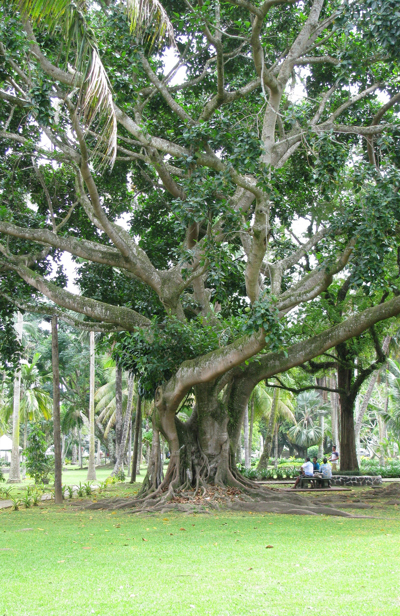
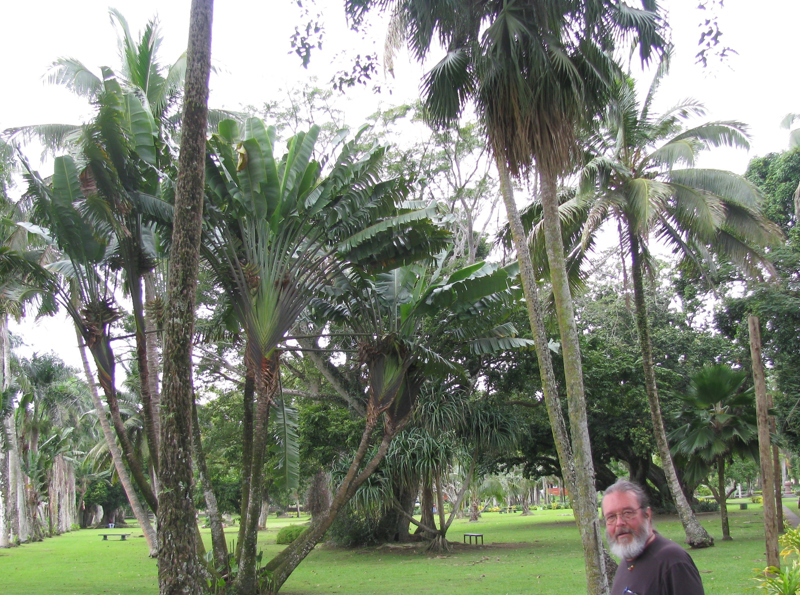

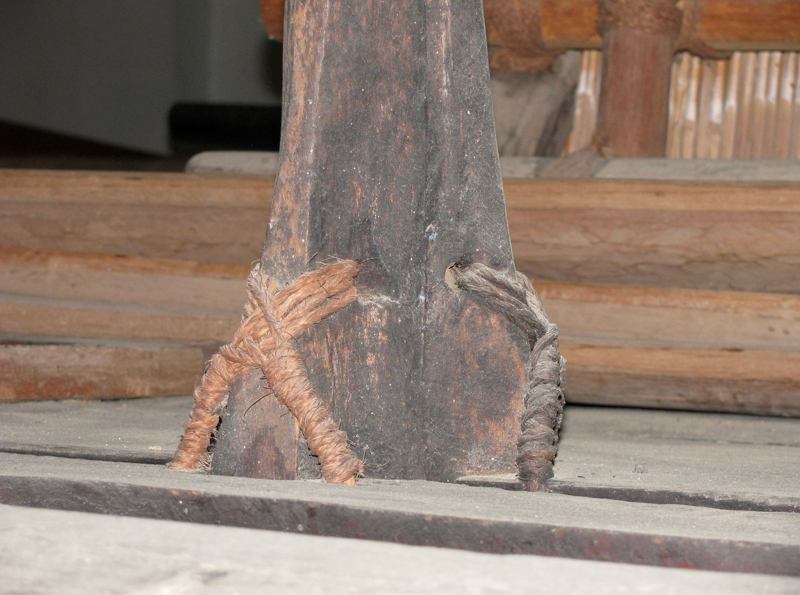
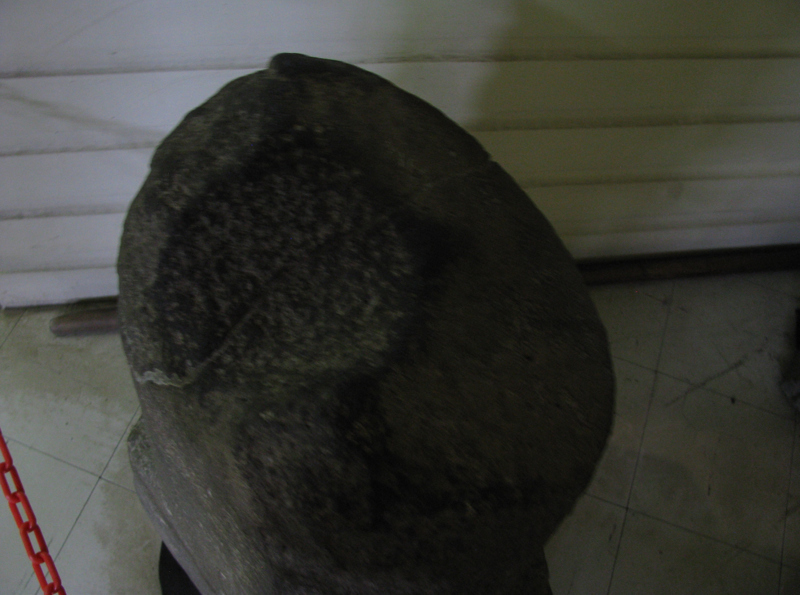

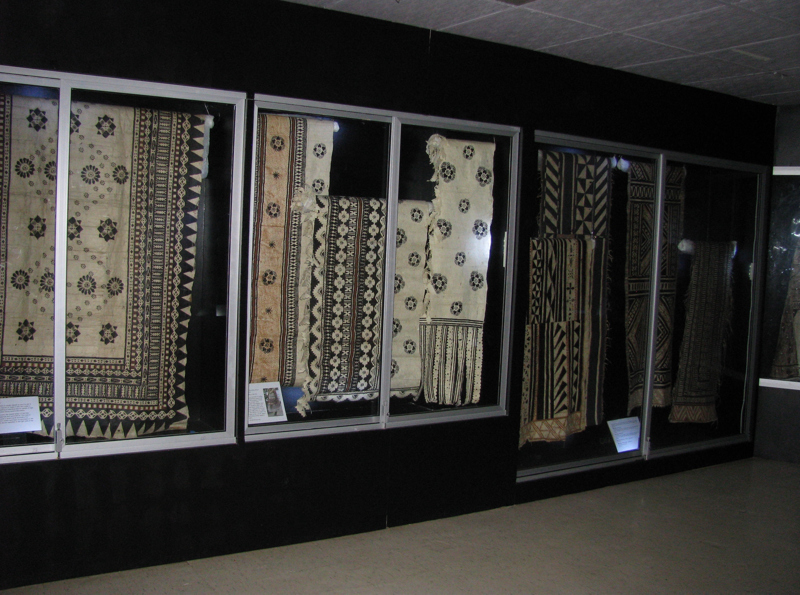
There are nice displays of other native-made ships and artifacts. We see an excellent display of weaving and woven items. Some are old and we can see how they have changed through the ages. A looping set of videos show how leaves are prepared for weaving and then it shows the weaving of different items. In the course of history, intricately decorated 'Lapita' pottery was abandoned for pots with a more plain appearance. Probably because cocoanut and wooden bowls are easier to use and not so breakable. We see the “boots” that had been reported as from a missionary that was eaten by cannibals.
After the museum visit we eat our lunch, bread and a very sweet pear. We taxi back to the produce market where we buy another pear, carrots and spinach to add to our beans and rice for dinner.
You know how birds settle in for the night? Tonight I was sitting on the porch overlooking the harbor and suddenly I realized that the birds were really loud. I watched as they flew in under a roof on a nearby structure that is open on the sides. Incredibly loud noise. We hardly hear animals at home much anymore. It was a very nice sound after all.
photo #1 Tree in the park outside the museum.
photo #2 Another view of the lovely park.
photo #3 The main attraction at this museum.
photo #4 Detail of how the vessel was put together.
photo #5 This rock was in a display labeled "killing stone from Namosi", (a province in Fiji), "used to kill victims of war. The victims

head would be placed on top of the stone then bashed with a club often decapitating the victim." These were not peaceful people.
photos #6 and #7 woven items.
photo #8 The dock from our transient hotel room with kitchen privileges.
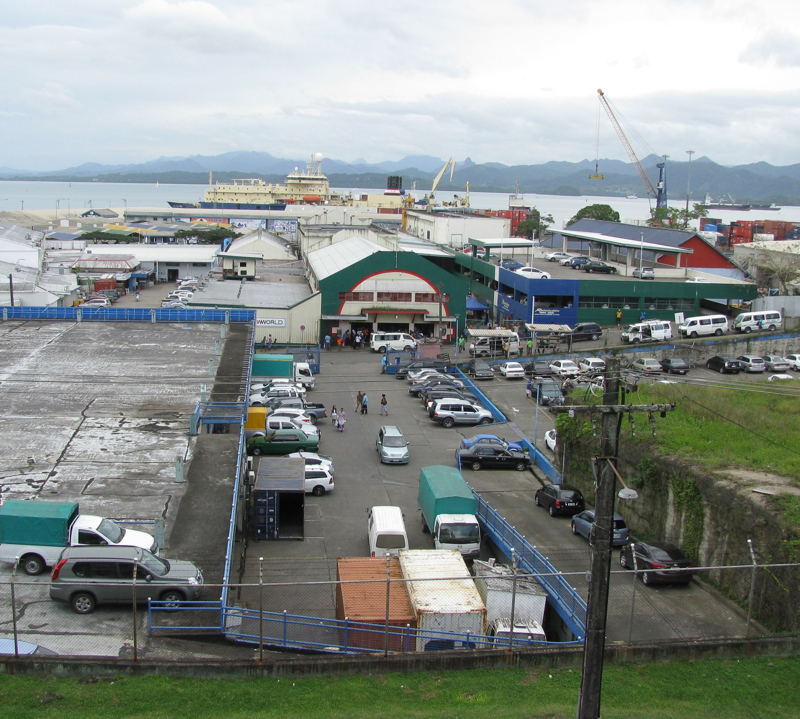
Begin vandaag nog!
Waar wacht je nog op? Leg je avonturen vast in een digitaal dagboek dat je kan delen met vrienden en familie. Wissel op elk moment tussen verschillende apparaten. Ga aan de slag in onze online applicatie.
